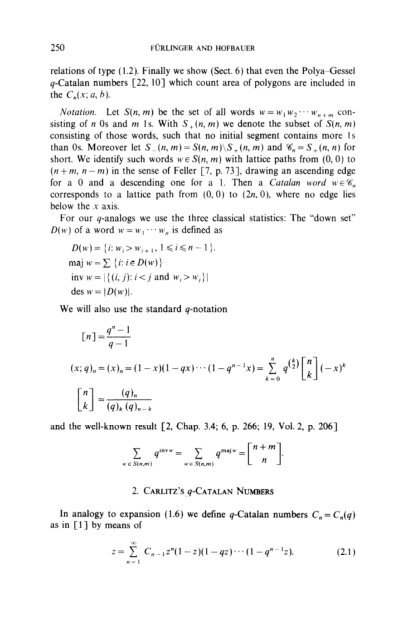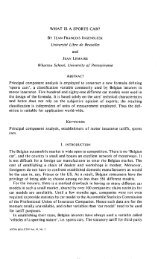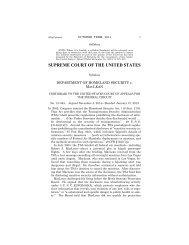85jct_catalan
Create successful ePaper yourself
Turn your PDF publications into a flip-book with our unique Google optimized e-Paper software.
250 FtiRLINGER AND HOFBAUER<br />
relations of type (1.2). Finally we show (Sect. 6) that even the Polya-Gessel<br />
q-Catalan numbers [22, lo] which count area of polygons are included in<br />
the C,(x; a, h).<br />
Notation. Let S(n, m) be the set of all words w = w, w2 .. w, +m consisting<br />
of n OS and m 1s. With S+(n, m) we denote the subset of S(n, m)<br />
consisting of those words, such that no initial segment contains more 1 s<br />
than OS. Moreover let K(n, m) = S(n, m)\S+(n, m) and %$ = S+(n, n) for<br />
short. We identify such words M: E S(n, m) with lattice paths from (0,O) to<br />
(n + m, n -m) in the sense of Feller [7, p. 731, drawing an ascending edge<br />
for a 0 and a descending one for a 1. Then a Cutalan word M’ E %,,<br />
corresponds to a lattice path from (0, 0) to (2n, 0), where no edge lies<br />
below the x axis.<br />
For our q-analogs we use the three classical statistics: The “down set”<br />
D(w) of a word w = w, .. . w,, is defined as<br />
D(w)= {i: Wi>W,,,, 1 di6n-1).<br />
maj w=C (i: iED(<br />
invw=l{(i,j):iw,}/<br />
We will also use the standard q-notation<br />
[n] =‘“-l<br />
q-1<br />
(X;q),,=(X)n=(l-x)(l-qX)~~~(l-q~-ix)= i q(4) (-X)k<br />
k=O<br />
(4)n<br />
= (q)k (q)n-k<br />
and the well-known result [2, Chap, 3.4; 6, p. 266; 19, Vol. 2, p. 2061<br />
c q~n~~‘= c qmajw,= n+nm<br />
w E S(n,m) we S(n,m) [<br />
2, CARLITZ'S ,q-CATALAN NUMBERS<br />
1<br />
In analogy to expansion (1.6) we define q-Catalan<br />
as in [ 1 ] by means of<br />
numbers C, = C,(q)<br />
z= f c, .12”(1-Z)(l-qz)~~~(1-qn~‘z). (2.1)<br />
n=l





